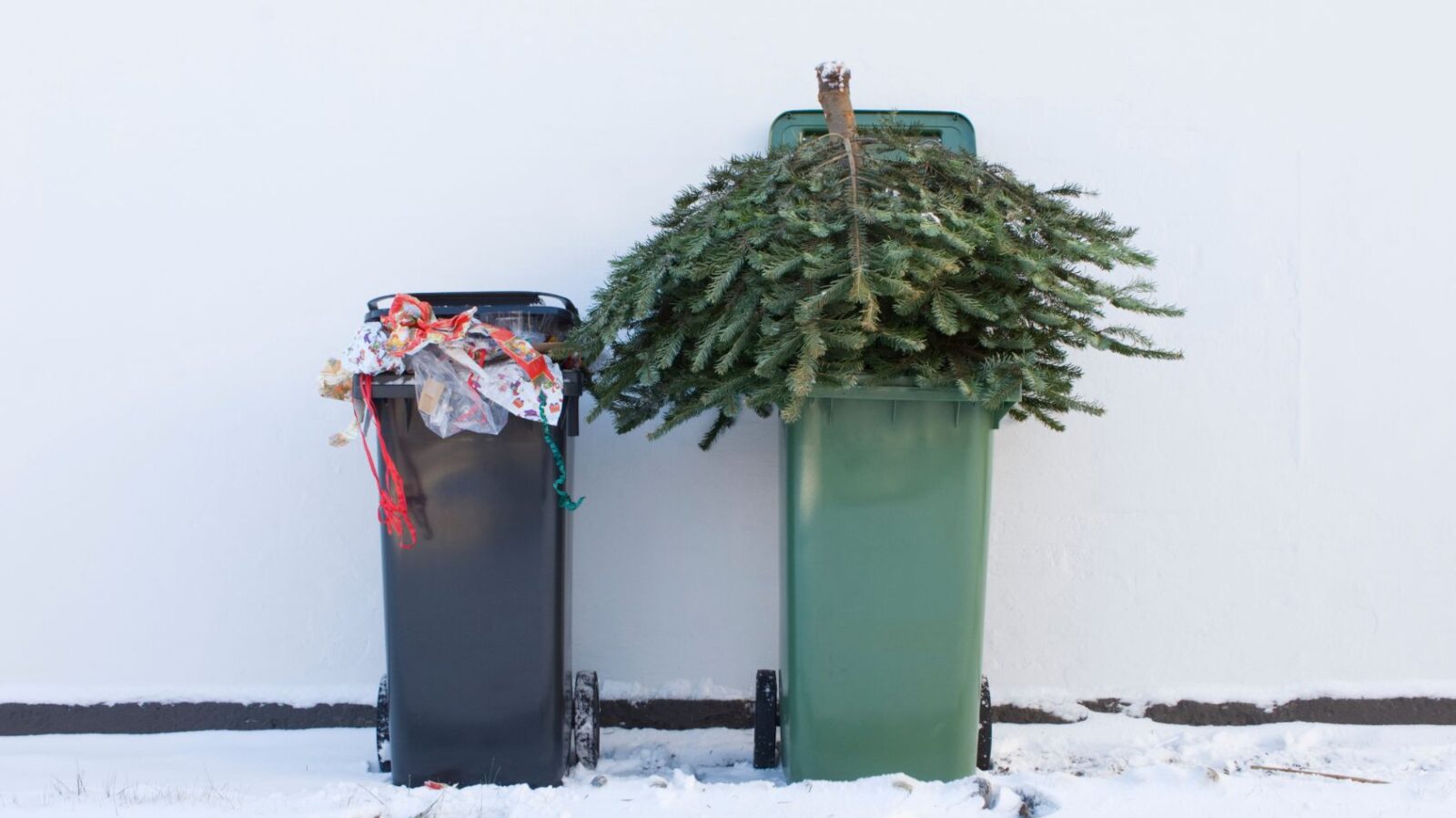Guest post by Sarah Gerhardt
When the holiday season draws to a close many real Christmas trees are simply discarded and thrown away. This is actually a sad waste of a great resource.
How we dispose of our faded Christmas trees can make a big difference to their carbon footprint. If a tree is sent to landfill, it will produce methane gas as it decomposes which creates a huge amount of extra emissions. So this should be strictly avoided.
Thankfully most Scottish councils now offer recycling or composting services for Christmas trees which cuts down on greenhouse emissions. Check with your local council for special collection dates in January.
If you would like to recycle your Christmas tree, take a look at our Caledonian Collections Garden Waste Service or EcoCollect. Just remember to REMOVE all Christmas decorations prior to collection, as you’d be amazed by what ends up on our sites each year! We recycle tens of thousands of trees from all across East Lothian, Edinburgh, and Midlothian. Once on our yards we put the trees through the shredder, compost what we can, then whatever is leftover is chipped to be used as biomass fuel.
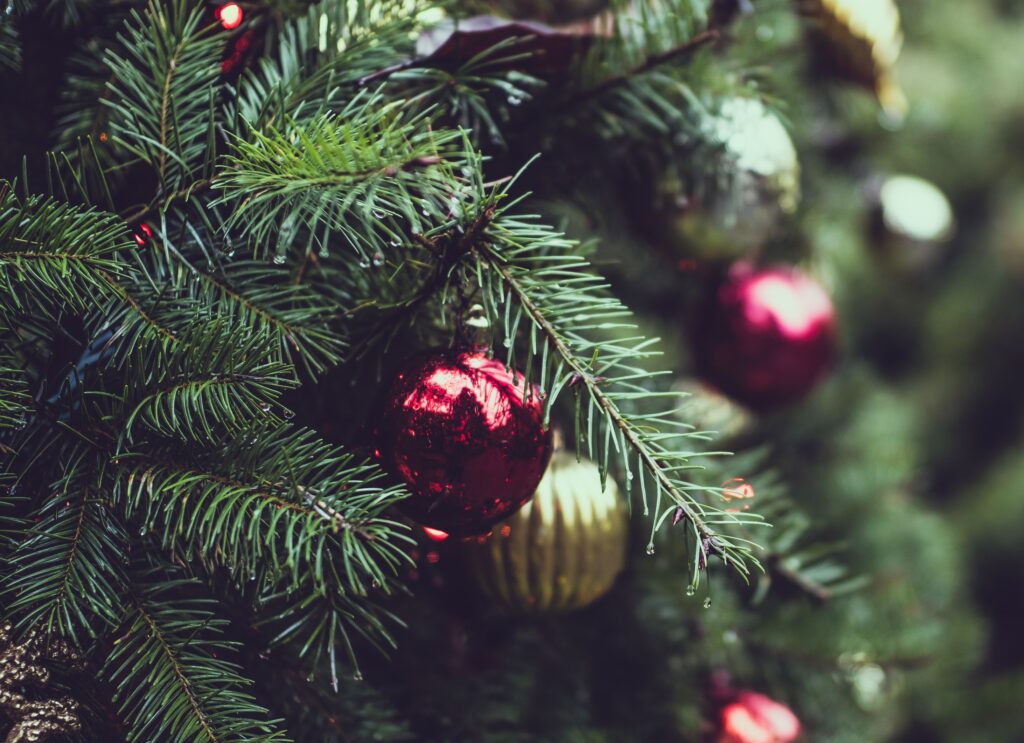
However, there are many other ways in which you can repurpose or recycle your Christmas tree, or parts of it, in an environmentally-friendly way.
Today, we will take a look at eight of them.
For many of the following tips bear in mind that your tree may have been sprayed with pesticides unless you bought an organic tree. Always ensure that it has not been sprayed when using it for anything involving wildlife and food.
1. Plant out or reuse potted Christmas trees
If your christmas tree has roots reusing it is quite simple. You can plant it out in the garden. Please take into account that Christmas trees are usually fast growing spruces, firs and pines that will become large in a few years. So ensure you actually have the space for it.
Instead you could leave it in its pot and place it outside. Staying in the pot will restrict its root growth and you can simply bring it back inside next Christmas. Ensure to feed or re-pot it occasionally so that it remains healthy.
2. Turn your Christmas tree into a bird treat tree
Many high quality chopped trees will look good beyond the Christmas period, especially if they were kept in a cool place during the festive season (i.e. near a window) and were standing in water.
When the festive season is over and you have taken out the ornaments, place the tree on the patio, balcony or in the garden. Hang it with bird treats such as small suet balls or DIY bird seed baubles. Birds will welcome the shelter from your Christmas tree as well as the winter snack. If possible, position the tree so that you can see it from your window. The green of the tree and the bird activity will surely brighten a grey winter day!
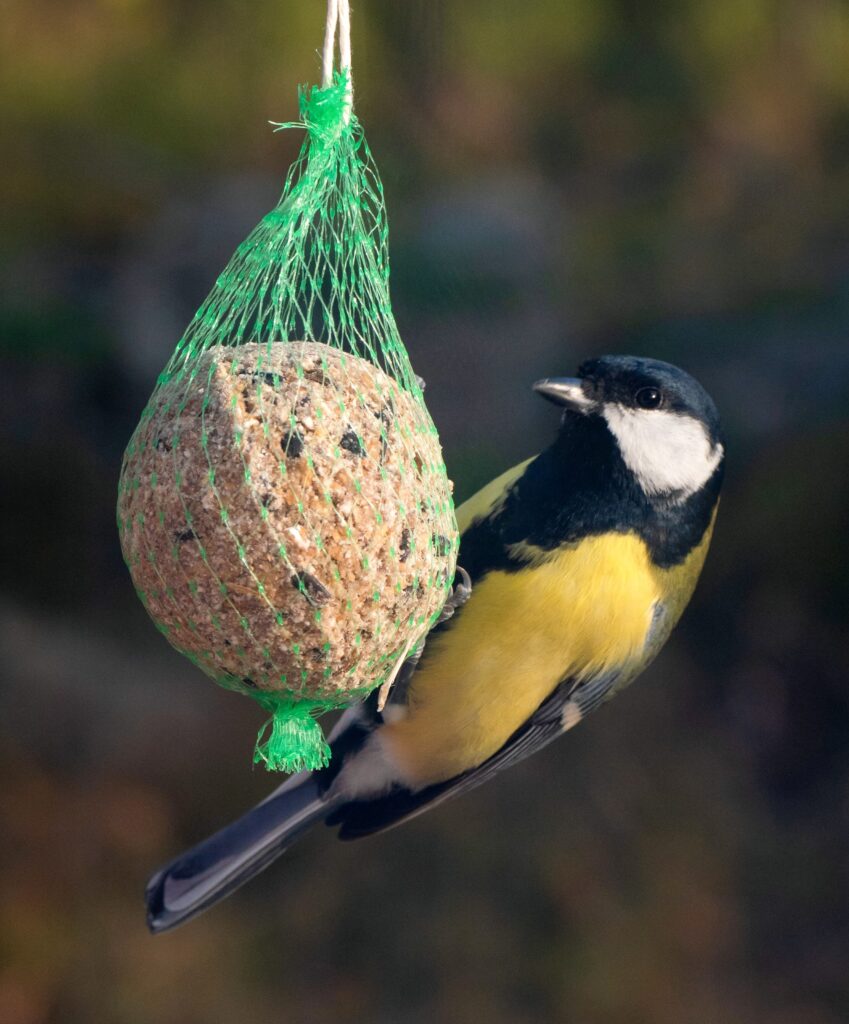
3. Assemble a log pile for wildlife
Another useful new purpose for your old Christmas tree is to create a wildlife home from it by turning it into a log pile. Chop the trunk of your tree into logs and stack them in a corner of the garden. Log piles make great homes for insects and small mammals. You can also pile up the branches to create a warm sheltered place for wildlife.
4. Build an Insect Hotel
Insect hotels are great ways to support beneficial insects such as lacewings, solitary bees and ladybirds. You can use parts of your christmas tree when building one.
A simple insect hotel can be made from a wooden box with an open front. Create divisions in the box and fill them with different kinds of material such as straw, pinecones, sticks and small logs with different sized holes in them. This will attract a variety of different insects. You can use your Christmas tree for some of these materials. Cut the Christmas tree trunk into sections and drill different sized holes in them. Smaller dried branches can be placed in another chamber.
It is important for the insect hotel to be protected from the rain and wind. It should provide a range of different hole sizes and materials. Depending on where you site it, different kinds of insects will be attracted to it. Having an insect hotel in your garden can help increase its biodiversity, help pollination and provide natural pest control for your plants.
For more info on building insect hotels take a look here.
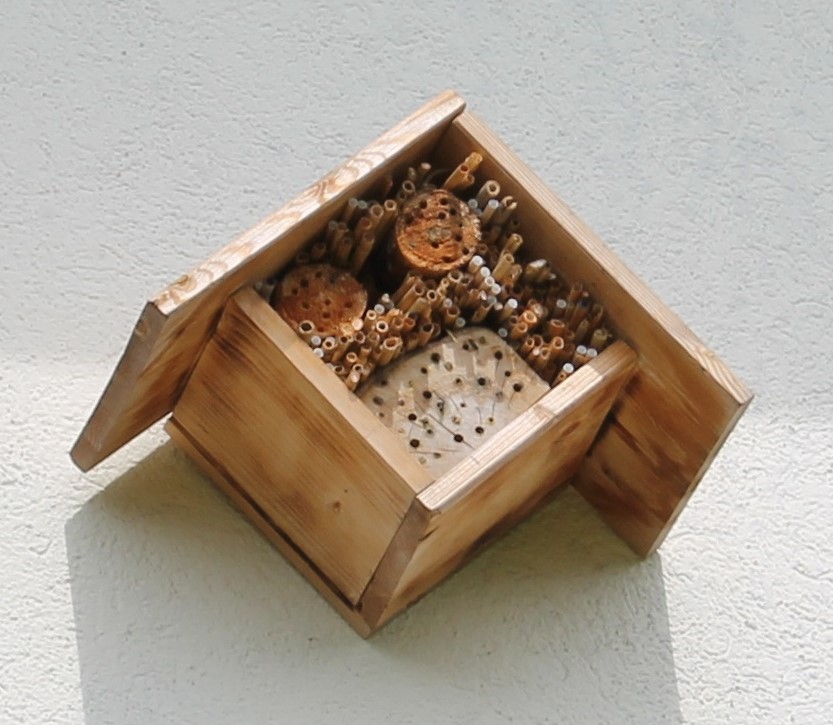
5. Create a Christmas tree whisk
There are many ways in which you can use a faded Christmas tree in unexpected and creative ways.
An old favourite in my family is the christmas tree top whisk. Christmas trees are picked for their symmetric shape and their straight tops are ideal to make a simple whisk for the kitchen. Do this when the tree is still fresh and has not dried out too much as it will make it easier to remove the bark.
To make the whisk chop off the top of your Christmas tree immediately below the first or second set of branches. Make sure that the branches are relatively evenly spread out around the trunk. They will become the whisk and there should be at least 5 of them to make an effective whisk. The trunk will become the handle. It is up to you how long you leave the handle but cut off any other side branches so you are left with a straight handle and just the cluster of side branches at the bottom. Shorten them to about 3-5 cm each.
Now strip off the bark with a good knife. If any bark is tricky to get off, place the whisk into a pan of boiling water for about 10 minutes. This will soften the bark and make it easier to remove. Once all the bark has been removed, sand down any rough edges and coat the whisk with a layer of linseed oil.
This style of whisk lends itself well to stirring porridge or whisking an egg. To operate it, place the palm of your hands flat together and put the handle of the whisk between them. Rub your hands up and down as if you were trying to warm yourself when your hands are cold. This will cause the whisk to spin.
This whisk design is based on the Scandinavian tvare whisk. Alternatively the branches can be bent down and tied together to create a more common whisk design, the Scout camp whisk.
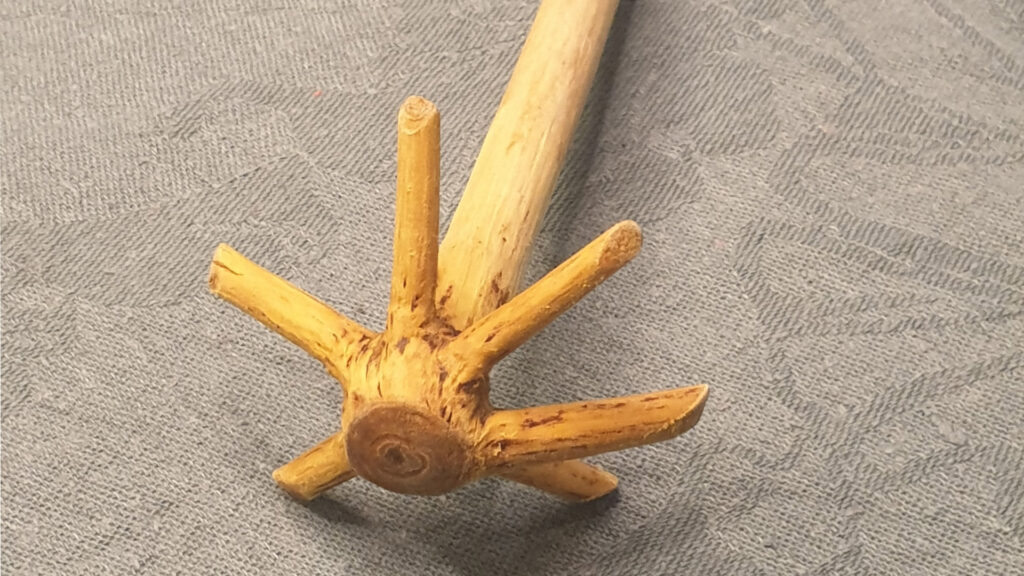
6. Make Christmas tree cleaner
If your Christmas tree is a scented tree such as a Scots pine or Douglas fir you can put its scent to good use after Christmas. You can make a simple, effective vinegar cleaner with a lovely smell.
Take a few small branches or several cups of needles and wash them in a bowl of water with some soap. The needles will be easier to remove from the branches when the tree has already dried out. Leave the branches or needles to soak for a bit, then rinse them in cool water. Shake off any excess water and chop the branches into small pieces.
Layer the needles or chopped branches in a glass jar and top it with distilled white vinegar so everything is submerged. Close the jar, give it a shake and leave it to sit in a cool, dark place. Optionally mix the Christmas tree needles and branches with citrus fruit to add a hint of citrus smell.
After about a week the Christmas tree needles will have been infused into the vinegar. Once the vinegar smells of them it is ready to be used. Strain out the solids and transfer the liquid to another container. White vinegar is a natural and non-toxic antibacterial cleaner that works well for many cleaning purposes around the house such as cleaning windows and mirrors, sinks and toilets and stainless steel surfaces.
7. Use the branches as winter cover and climbing aid
You can cut off the branches on your Christmas tree and lay them around the base of delicate plants in your garden. This will provide a protective layer against frost. As the branches dry and spring arrives the needles will drop off all by themselves. If they are large enough the bare branches can now be stuck in the ground and serve as a climbing aid for plants such as beans or clematis.
8. Turn your Christmas tree into ericaceous mulch
Christmas trees are usually conifers and those make great mulch for acid-loving (ericaceous) plants such as rhododendrons, heathers and blueberries. Conifer wood and needles help keep the pH of the soil low and create an environment in which acid-loving plants can thrive.
You can turn your Christmas tree branches into mulch by chopping them into small pieces using loppers and secateurs but it will be a lot easier if you have access to a garden shredder. Alternatively, you can wait for all the needles to fall off and then gather them and use them as your mulch.
Spread the Christmas tree mulch around your ericaceous plants. Note that rhododendrons and azaleas are surface rooters and do not like to be buried. The mulch layer should not exceed a depth of 3 cm and the area right around the stem of the plant should be kept free from mulch.
Not only will the mulch help maintain ideal pH levels it will also improve the soil around the plants and protect it from rain erosion and frost damage.

Christmas trees are usually seen as single use, disposable items and debates around natural vs. artificial trees are based on this premise. However, there are plenty of ways in which faded Christmas trees can be repurposed and recycled. They can be a great resource way beyond Christmas time.
About the author: Sarah Gerhardt is a gardener, linguist and punk musician based in Edinburgh. She was head gardener at the Dean Gardens, Edinburgh for 9 years and runs her own gardening business Gerhardt’s Garden Service. Find out more via her Linktree: https://linktr.ee/gerhardtsgardenservice
-
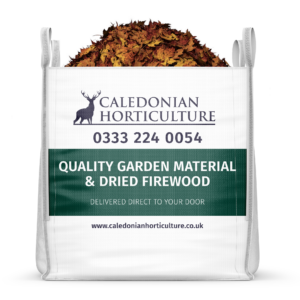 Caledonian Garden Waste Collection£25.00 – £130.00 inc VAT
Caledonian Garden Waste Collection£25.00 – £130.00 inc VAT -
 Kiln Dried Hardwood Logs£125.00 inc VAT
Kiln Dried Hardwood Logs£125.00 inc VAT -
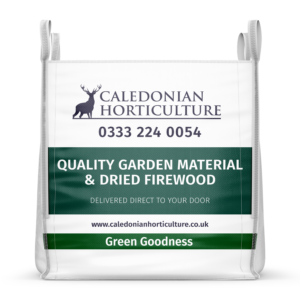 Builder’s Bag Green Goodness£52.00 inc VAT
Builder’s Bag Green Goodness£52.00 inc VAT

